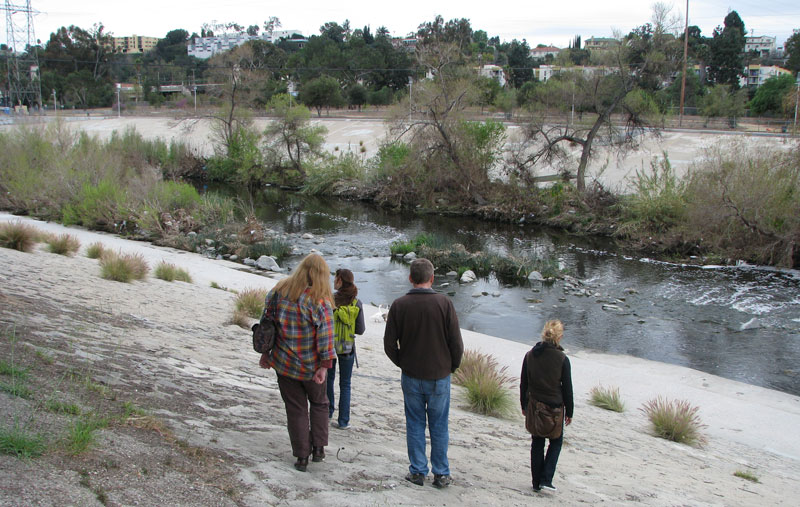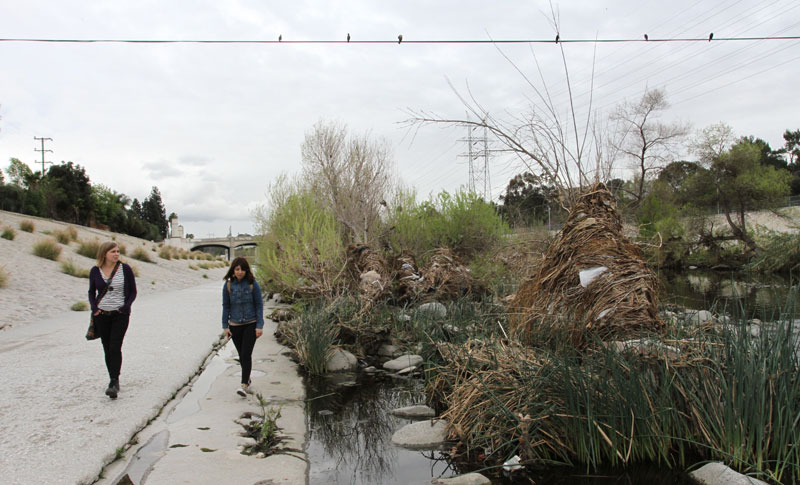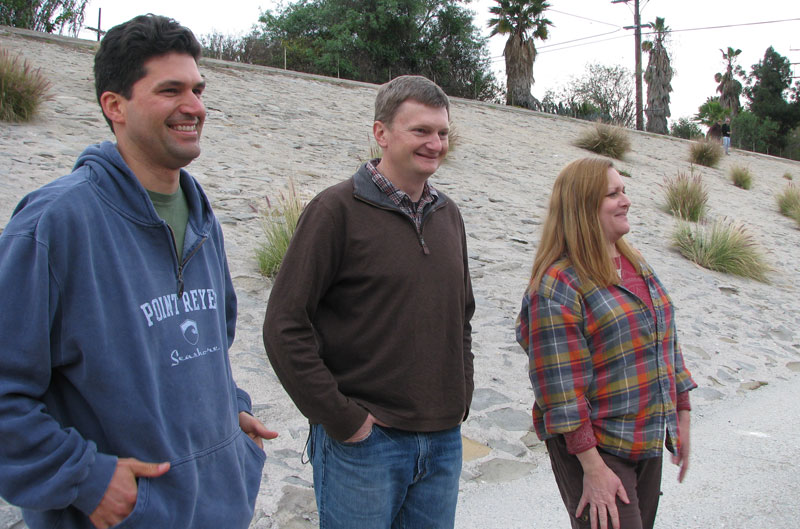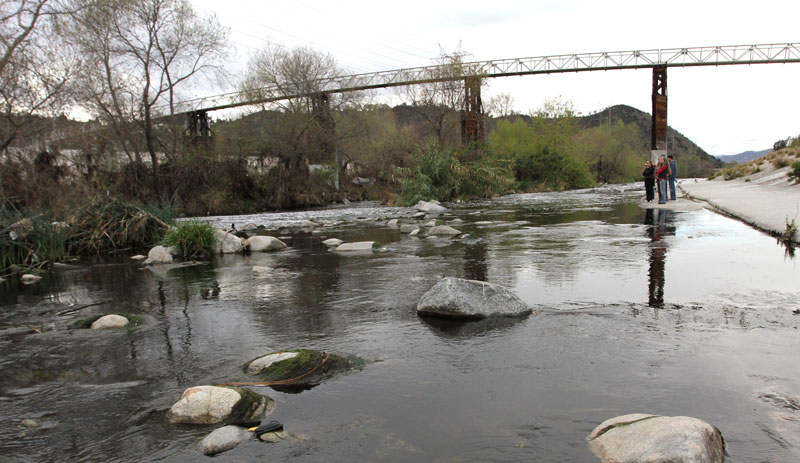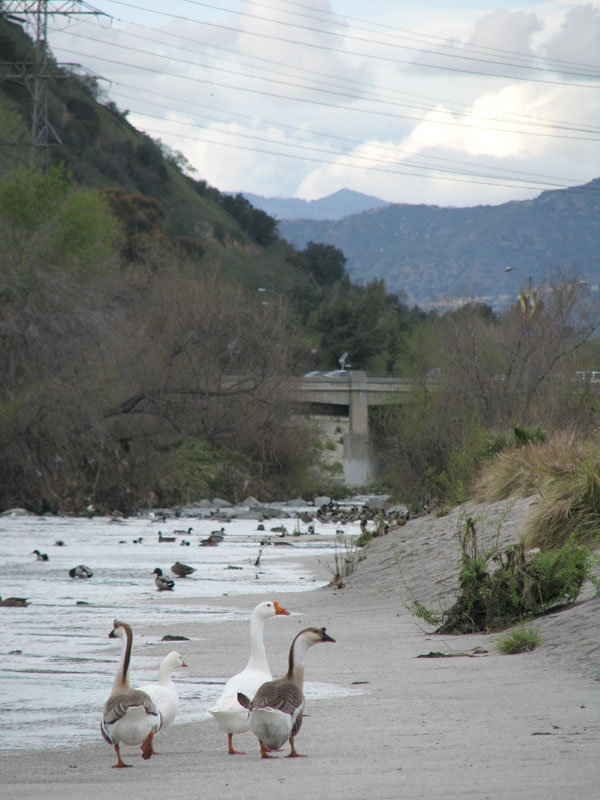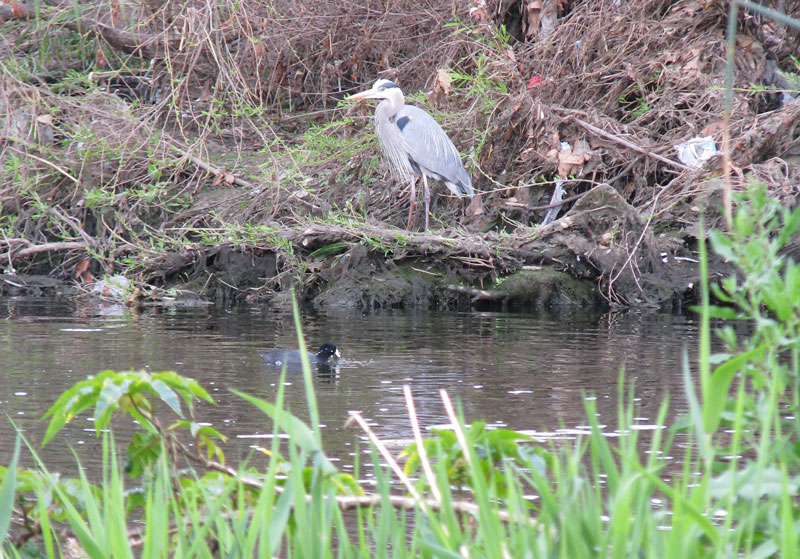
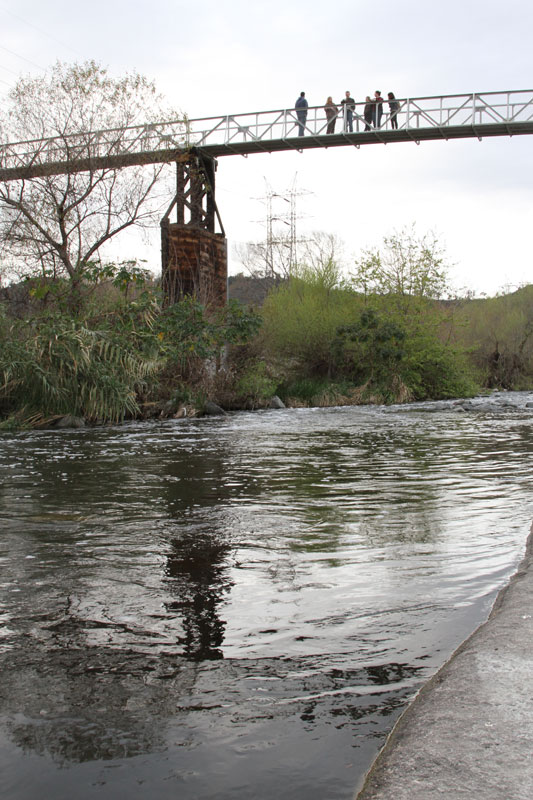
As part of the recent all-staff trip to Los Angles, our second stop (after Kogi BBQ tacos) was the Los Angeles River Center & Gardens, headquarters of the non-profit Friends of the Los Angeles River (FoLAR). We met FoLAR’s Education Director Shelly Backlar, a former Committee staff member, and she took us to visit the river at the Sunnynook Footbridge in the Atwater Village area.
For 80% of its 50-mile length from the San Fernando Valley, south through Los Angeles, and to the ocean in Long Beach (a drop of 3,000 feet), the LA River flows through a cement-lined channel. In the section we visited, river flows have broken through the bottom of the cement lining, revealing a rocky river bottom that supports riparian plants and plenty of trees. In the middle of the city, at the bottom of it’s concrete channel, it felt almost lush!
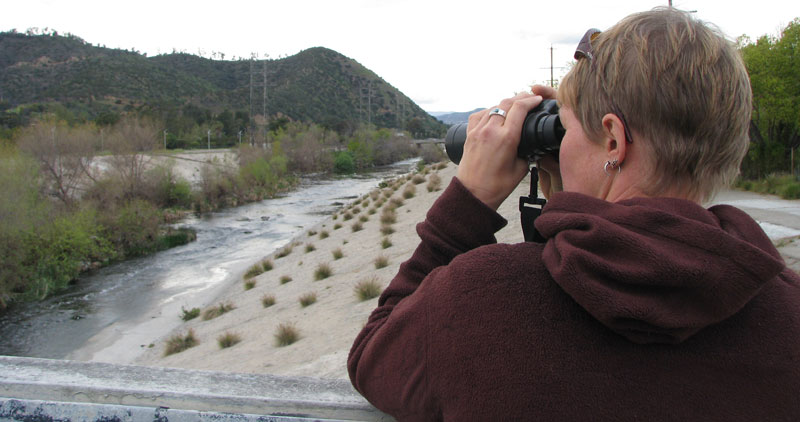
One of the best surprises of the visit was the abundant bird life. Project Specialist Erica Tucker (who was our Birding Intern last summer) had brought her binoculars, and she soon began pointing out all sorts of birds. A gaggle of four large geese waddled past us, slipping into the river just upstream. A kingfisher zipped by in a blur of blue-and-white, cackling all the way. Ducks of all kinds paddled in groups, snacking on algae. A Great-blue Heron stood motionless across the river from our group, eventually moving to a rock in the middle of the channel, where it stood motionless again. And cormorants perched on the power line overhead, raising their wings, preening, and sleeping.
The water had a slightly chemical smell—it reminded me of the smell of dryer sheets—because most of the flow at that point is treated wastewater from the Tillman Water Reclamation Plant, one of DWP’s treatment plants upstream. In fact, most of the entire river’s 60-million-gallon flow is treated wastewater. With today’s high water treatment standards, the LA River was safe enough to wade or swim in where we visited, but not safe enough to drink. One of FoLAR’s goals is to create a “swimmable, fishable, boatable” LA River, and all three were definitely possible where we stood!
During our visit, rainclouds hovered over the LA Basin, showing us the other main source of water for the LA River: stormwater runoff. In the winter, the water is typically much dirtier than we saw it, since rainwater runoff sweeps oil, dirt, and trash off city streets, through storm drains, and into the river channel. Remember: all drains lead to the ocean, and to rivers before that!
Shelly told us about FoLAR’s impressive cleanup efforts that take place along the river each year. They organize about 5,000 volunteers who pick up trash at 15 different river sites in the city, removing literal tons of trash from the LA River. During our afternoon visit we saw lots of people enjoying the river. Runners jogged past, a grandpa and grandson toddled across the bridge, and man coaxed his puppy down the concrete slope to the water. The LA River has lots of potential to provide a green escape for city dwellers, and to unite the city along its course. Make sure to visit if you’re in the LA area.
